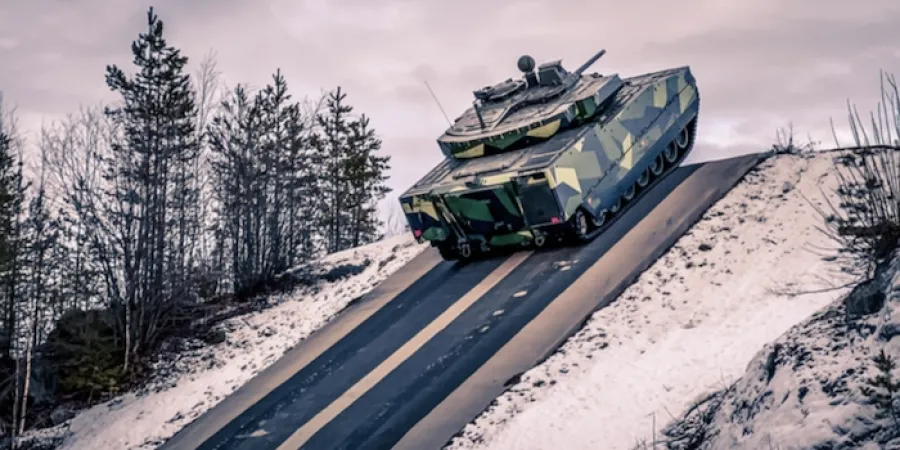Slovak army selects CV90 MK IV as future infantry fighting vehicle
Slovakia intends to purchase 152 armored tracked vehicles of seven different variants in the first phase of procurement, while in the second phase, a further 71 vehicles are to be procured
Eyal Boguslavsky
| 01/06/2022
BAE CV90 MK IV Infantry Fighting Vehicle is the Slovakian Army future IFV. The Slovakian Ministry of Defense announced last week that an evaluation committee of the Ministry selected the CV90 Mk IV as the new platform to replace the outdated BVP-1 and BVP-2 armored personnel carriers. However, this decision still has to be confirmed by the Slovak government, which should happen by June 30, 2022.
Slovakia intends to purchase 152 armored tracked vehicles of seven different variants (110 infantry fighting vehicles, 15 command posts, 9 reconnaissance, 3 ant material rifles team, 9 grenade launcher team, 3 recovery and 3 maintenance and repair) in the first phase of procurement. In the second phase, a further 71 vehicles in seven variants (including 20 120 mm mortar carriers) are to be procured. BAE bid for the first phase is approximately €1.7 billion.
By the deadline of January 31, 2022, a total of five offers were received. Rheinmetall offered the Lynx KF41, General Dynamics European Land Systems the ASCOD, BAE with two variants of the CV90 Mk IV (CV 9030 IV and CV 9035 IV) and The last candidate was Borsuk from Polska Grupa Zbrojeniowa.
The CV90 Mk IV ended up being the closest to the requirements of the Slovak Army. According to a published evaluation table by the Slovak Ministry of Defense, the CV90 offer scored 292 points. The ASCOD finished second with 279 points and the Lynx third with 257 points. The Borsuk scored just 30 points, mainly due to the fact that its development is not completed.
The current schedule envisages the delivery of the first nine CV90 Mk IV in the armored personnel carrier variant in 2025. The remaining 143 vehicles are scheduled to be delivered between 2026 and 2028.
Slovakia intends to purchase 152 armored tracked vehicles of seven different variants in the first phase of procurement, while in the second phase, a further 71 vehicles are to be procured
BAE CV90 MK IV Infantry Fighting Vehicle is the Slovakian Army future IFV. The Slovakian Ministry of Defense announced last week that an evaluation committee of the Ministry selected the CV90 Mk IV as the new platform to replace the outdated BVP-1 and BVP-2 armored personnel carriers. However, this decision still has to be confirmed by the Slovak government, which should happen by June 30, 2022.
Slovakia intends to purchase 152 armored tracked vehicles of seven different variants (110 infantry fighting vehicles, 15 command posts, 9 reconnaissance, 3 ant material rifles team, 9 grenade launcher team, 3 recovery and 3 maintenance and repair) in the first phase of procurement. In the second phase, a further 71 vehicles in seven variants (including 20 120 mm mortar carriers) are to be procured. BAE bid for the first phase is approximately €1.7 billion.
By the deadline of January 31, 2022, a total of five offers were received. Rheinmetall offered the Lynx KF41, General Dynamics European Land Systems the ASCOD, BAE with two variants of the CV90 Mk IV (CV 9030 IV and CV 9035 IV) and The last candidate was Borsuk from Polska Grupa Zbrojeniowa.
The CV90 Mk IV ended up being the closest to the requirements of the Slovak Army. According to a published evaluation table by the Slovak Ministry of Defense, the CV90 offer scored 292 points. The ASCOD finished second with 279 points and the Lynx third with 257 points. The Borsuk scored just 30 points, mainly due to the fact that its development is not completed.
The current schedule envisages the delivery of the first nine CV90 Mk IV in the armored personnel carrier variant in 2025. The remaining 143 vehicles are scheduled to be delivered between 2026 and 2028.



